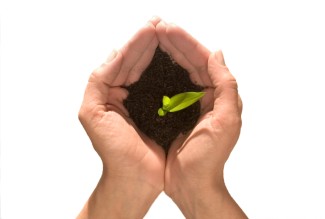This year’s 4/20, the high holiday of marijuana culture, comes at a time of robust growth for the cannabis industry. All puns aside, this growth underscores the industry’s need for energy efficiency. As the market develops in states like California, where recreational sales began in January, and Massachusetts, which follows suit in July, and as additional medical and recreational markets emerge around the country, energy efficiency can help reduce the energy use and pollution associated with cannabis cultivation, processing, and distribution facilities. The cannabis industry has expressed interest in efficiency’s other benefits, such as increasing market competitiveness and achieving sustainability.
Indoor cannabis cultivation is an energy intensive enterprise. Initial estimates suggest that the average cultivation facility uses 10 times as much energy, per square foot, as the typical office building. To successfully grow cannabis indoors, cultivators must recreate ideal outdoor climate conditions. Doing so requires significant energy to operate high-intensity lighting, HVAC, and dehumidification systems. Efficient equipment and practices (such as LED lighting and advanced HVAC systems) can slash energy use relative to traditional indoor cultivation techniques. However, outstanding questions remain about the most appropriate ways to cut energy use while maintaining optimal growing conditions.
There are no comprehensive national statistics on energy use in the cannabis industry, but data from states with legal commercial cultivation facilities are eye-opening. In Colorado, cannabis grow operations consume an estimated 300 gigawatt-hours (GWh) of electricity per year—0.6% of the state’s total electricity consumption. In Denver, the hub of the state’s cannabis industry, roughly 4% of electricity demand comes from such indoor operations. In Washington State, energy loads from indoor cultivation are forecasted to grow from an estimated 80-102 average megawatts in 2014 (about 1% of total demand in Washington) to 180-300 average megawatts by 2035. Over just a six-month period in Portland, Oregon, Pacific Power reported at least seven power outages due to indoor cannabis cultivation.
In the coming years, the number of cannabis grow facilities is expected to grow substantially and energy use will grow along with it. As of mid-2018, commercial cannabis cultivation for medical purposes is legal in 29 states, plus the District of Columbia, Guam, and Puerto Rico. Eight states (Alaska, California, Colorado, Maine, Massachusetts, Nevada, Oregon, and Washington) have legalized the cultivation of cannabis for recreational, adult-use markets, and numerous bills to legalize cannabis are under consideration in other states. Some state and local governments are exploring ways to incorporate energy and other sustainability requirements into cannabis industry regulations and permitting.
The lack of good energy data in cannabis cultivation facilities presents a challenge to policymakers, utilities, regulators, and researchers seeking to better understand and manage industry energy use. The ongoing federal prohibition on cannabis has created a gap in research and data collection normally carried out through federally-funded institutions and programs. This leaves it to states, NGOs, and industry to contribute the bulk of the scholarship and expertise needed to advance energy efficiency. New public and private initiatives aim to address these data issues and provide guidance to growers on how to boost efficiency. For example, the Resource Innovation Institute has developed the Cannabis PowerScore tool, which gives grower participants insights into their energy use while developing a robust dataset on energy use in cannabis cultivation facilities.
As cannabis industry expansion continues, ACEEE is exploring numerous paths for reducing the industry’s energy intensity. We are tracking best practices in facility design and operation, industry sustainability initiatives, and state and local policy development. We are partnering with the Resource Innovation Institute on initial scoping and fundraising efforts for a full market characterization study to document how energy is used in cannabis grow operations, identify the leading barriers and challenges to energy efficiency within the industry, and present the best opportunities for efficiency. Based on our findings, we will develop recommendations for cultivators, equipment suppliers, policymakers, utilities, and others with an interest in improving the industry’s energy efficiency.
Better data are critical. They can help develop energy use intensity baselines, create reliable estimates of the savings potential of efficiency measures, incorporate cannabis cultivation into energy demand forecasts, and develop a consensus on appropriate responses to the sector’s energy use. We hope our work will plant the seed for greater engagement of energy efficiency professionals in reducing the cannabis inudstry’s energy use . If you are interested in joining us, please contact me at jamann@aceee.org.


